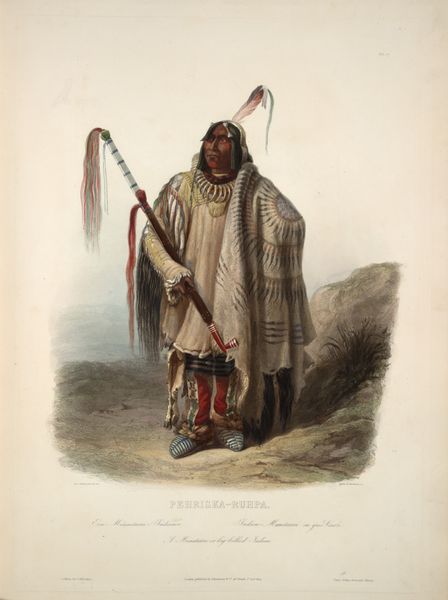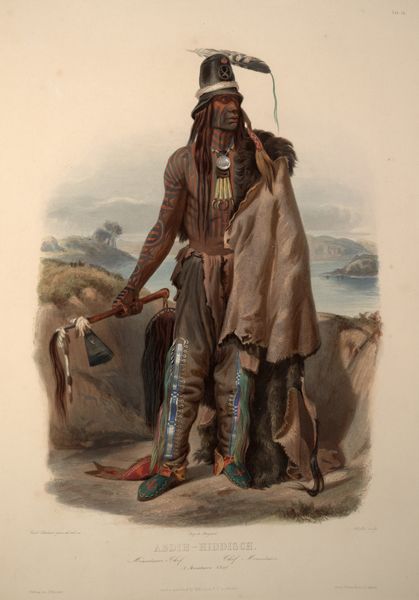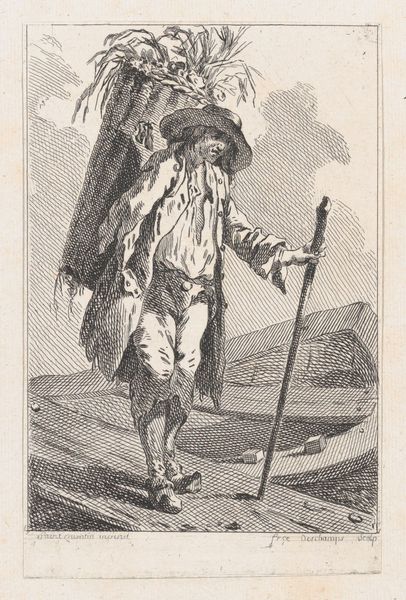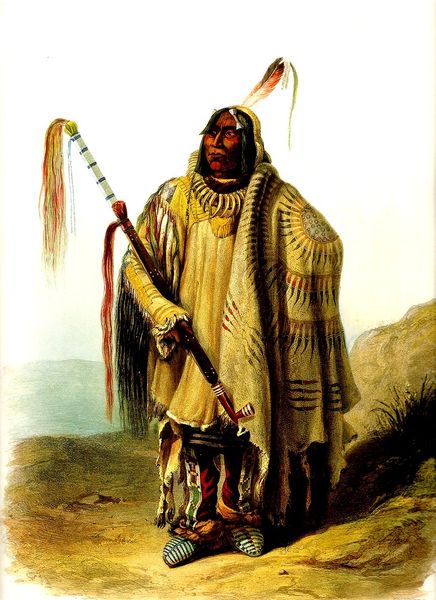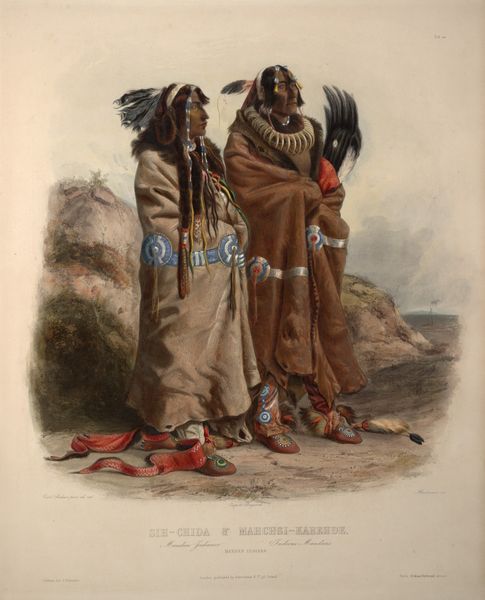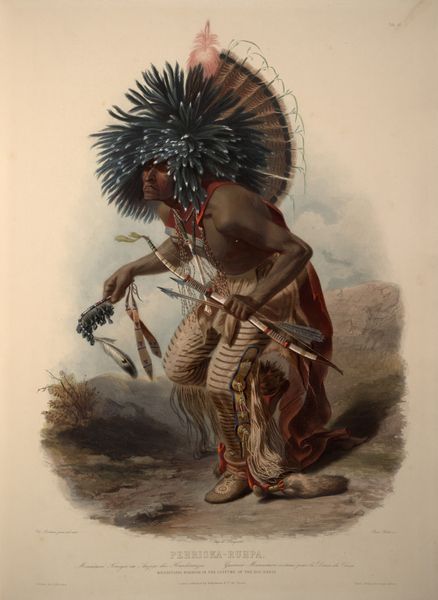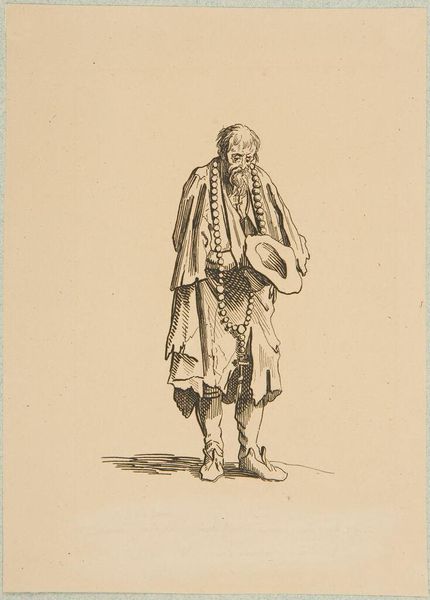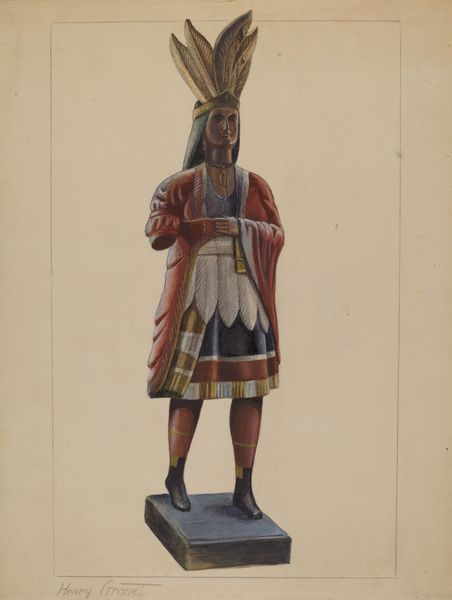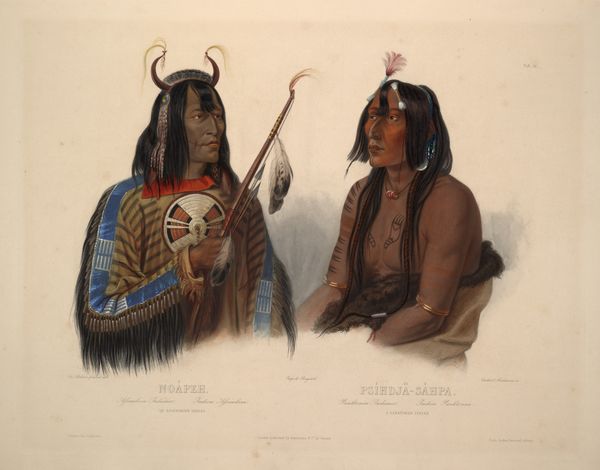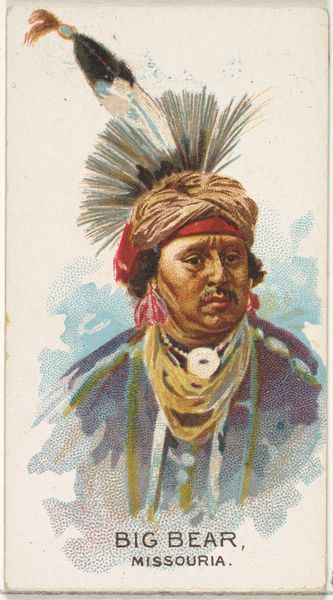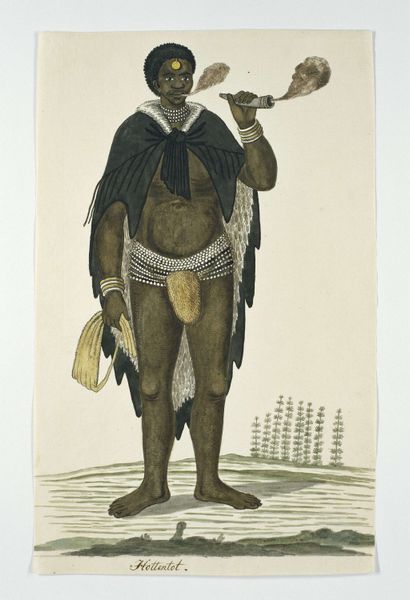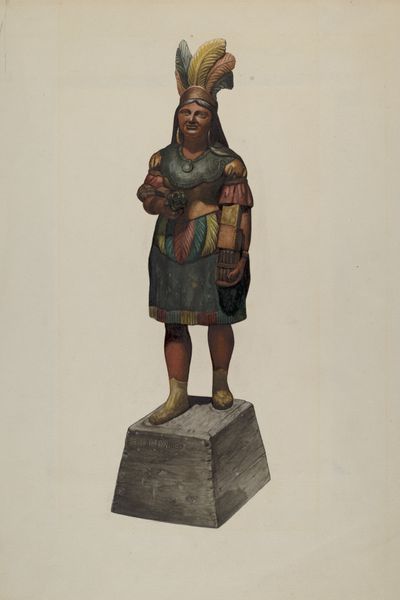
lithograph, print, paper
#
portrait
#
pencil drawn
#
lithograph
# print
#
paper
#
pencil drawing
Copyright: National Gallery of Art: CC0 1.0
Editor: So, this is "Ein Monitari Indianer," a lithograph from 1839 by Karl Bodmer. The subject is imposing, but what really strikes me is the level of detail achieved through printmaking. How would you approach an analysis of this work? Curator: I look at the process itself. Consider lithography, a printing technique relying on the chemical repulsion of oil and water. Bodmer used this technique to document the likeness of the Mandan people. His raw materials are not just ink and stone, but also, importantly, the very image of a personhood caught between indigenous traditions and encroaching colonial presence. Do you see how the commercialization of image-making intersects with labor, materiality, and consumption in the art market? Editor: Yes, that makes sense. The lithograph served a purpose, to portray an image for mass consumption. Do you see it as an exploitative practice? Curator: Well, consider the social context. It served the artist, Bodmer. How were his tools produced, the inks sourced? What of the social structures, markets, and policies that enabled the creation of this portrait? Whose stories were told, and for what purpose? This image reflects an unequal power dynamic and a market driven by exoticization and consumerism, no? Editor: That’s a crucial point. We’re not just looking at the artistry but at the machinery—literal and figurative—behind the image. It's a complicated and layered meaning embedded in one print. Curator: Exactly. I appreciate that shift from looking only at beauty to understanding how cultural context intersects the meaning embedded in an artwork like this.
Comments
No comments
Be the first to comment and join the conversation on the ultimate creative platform.
